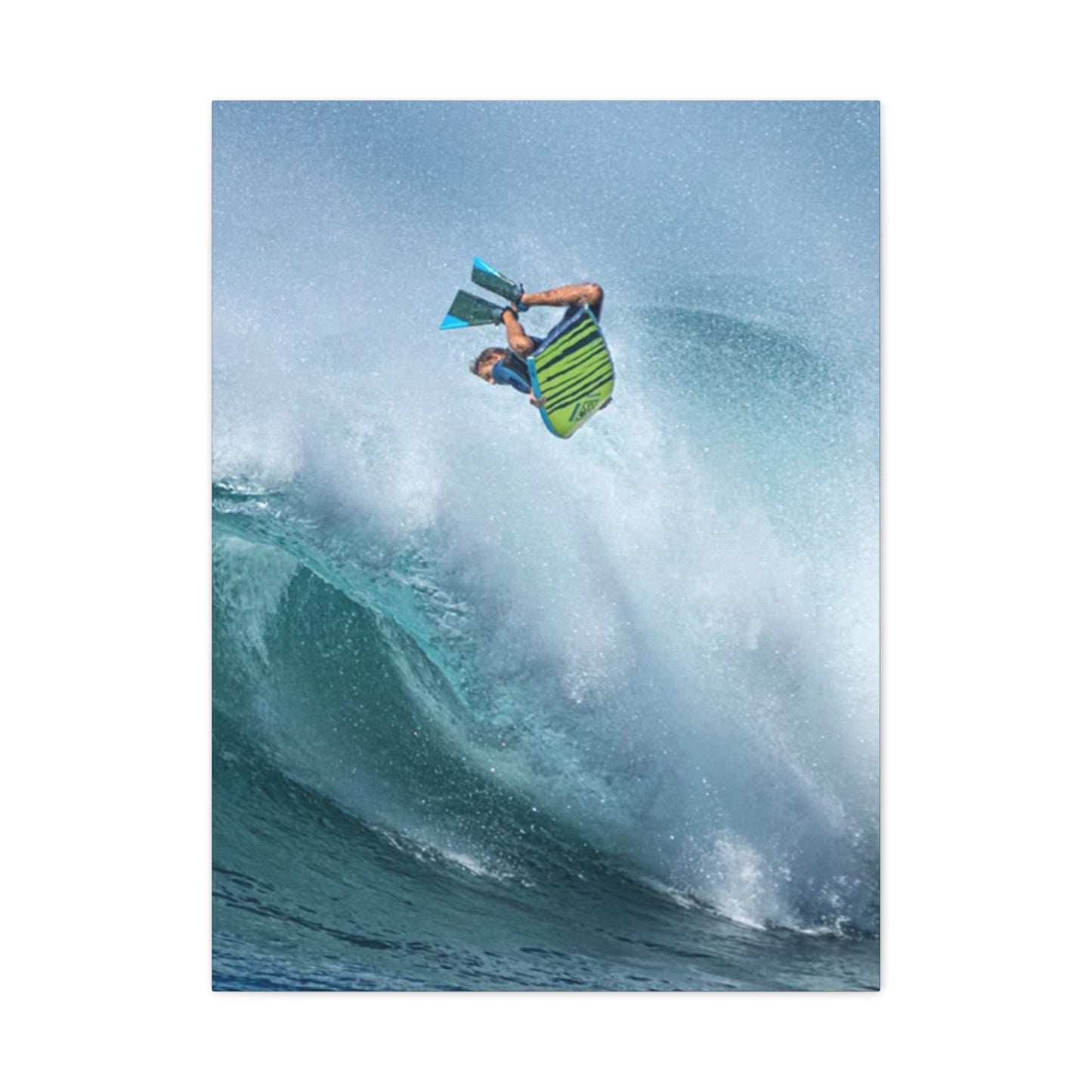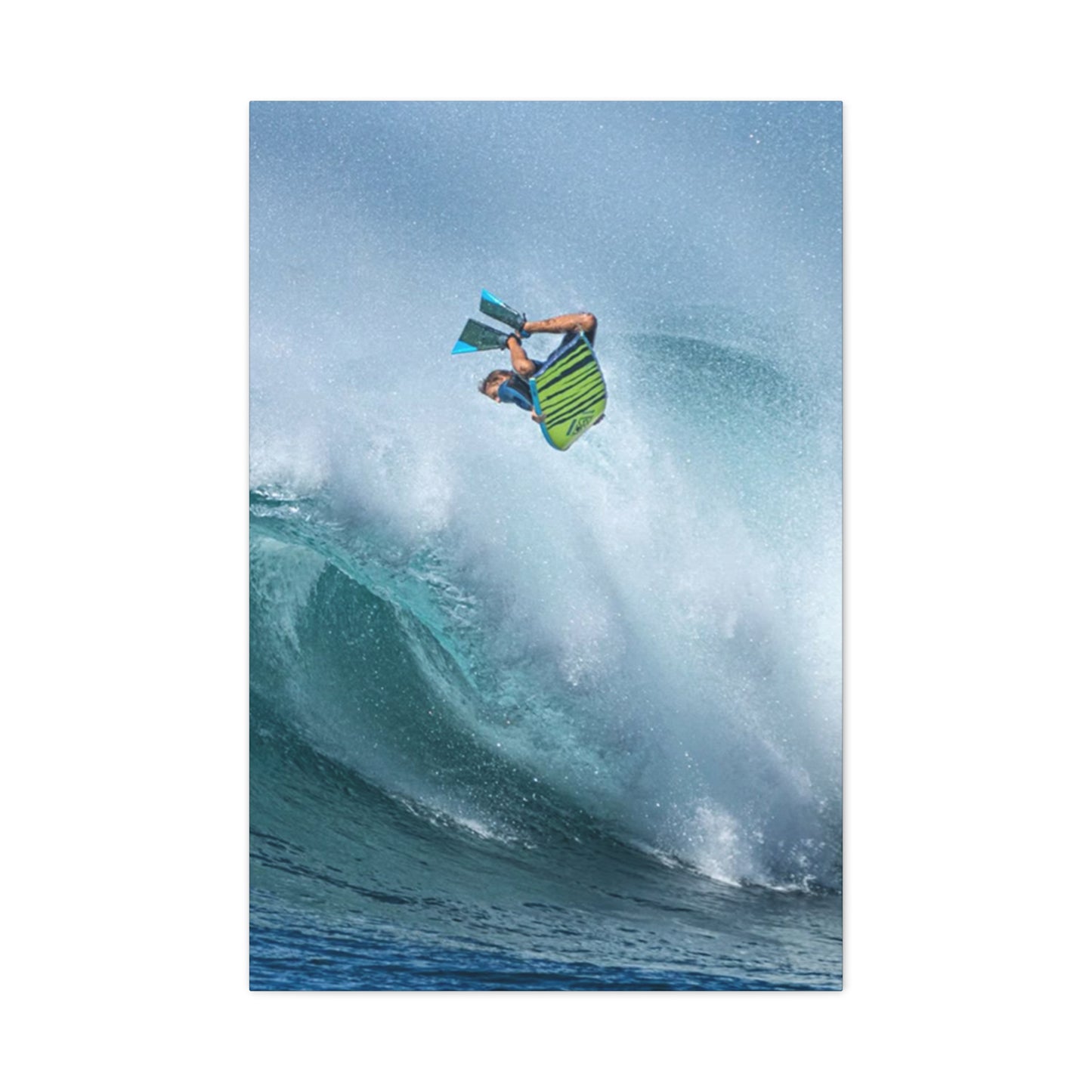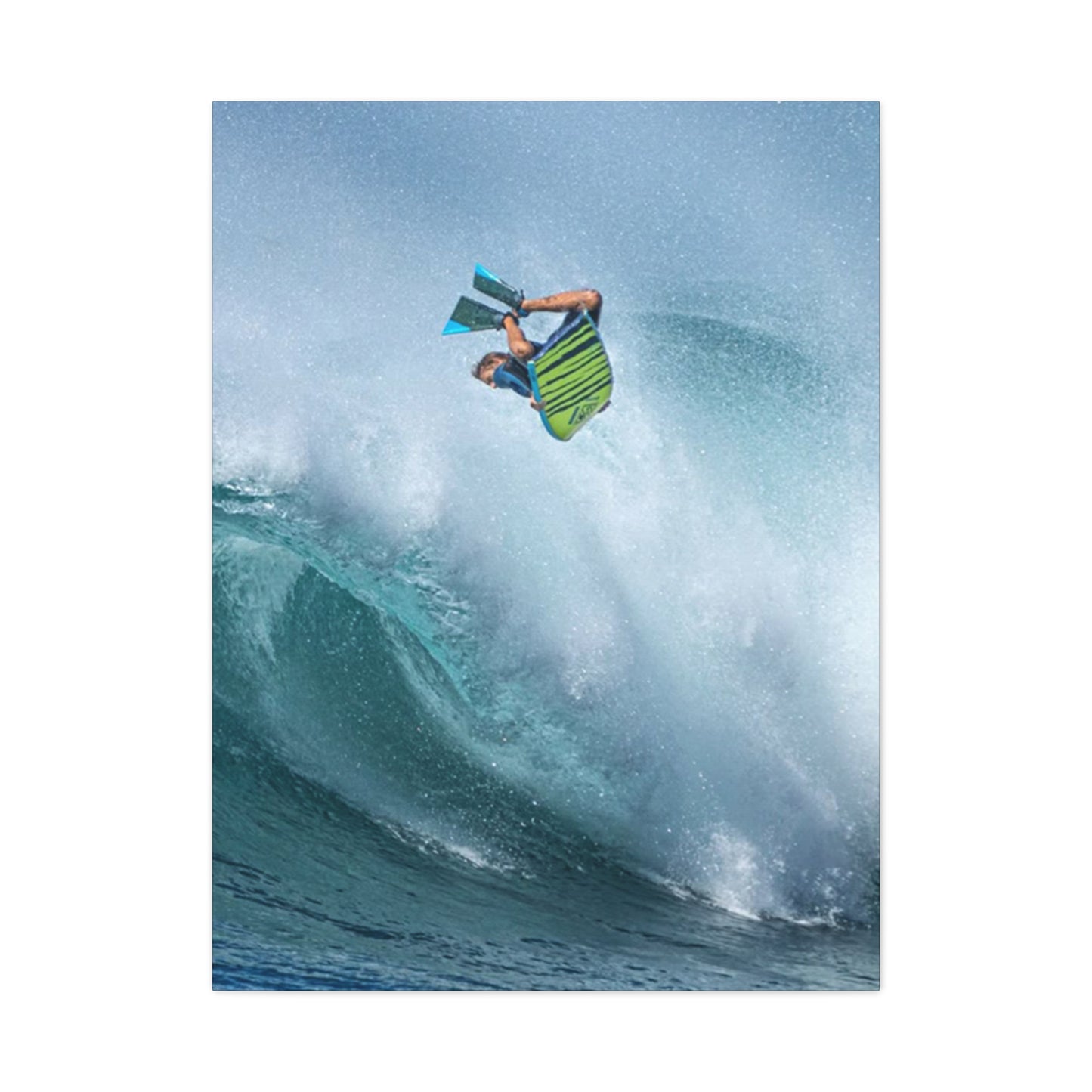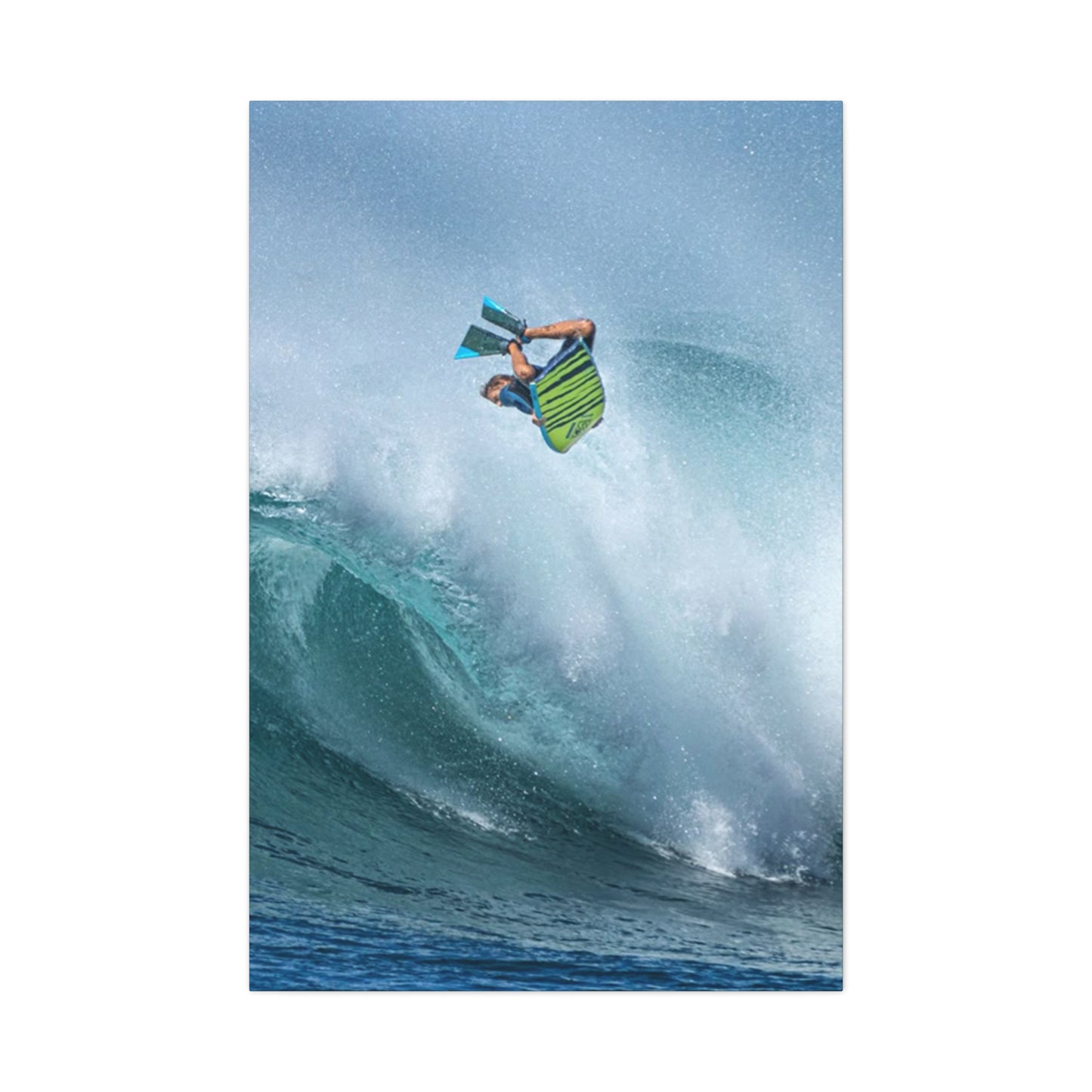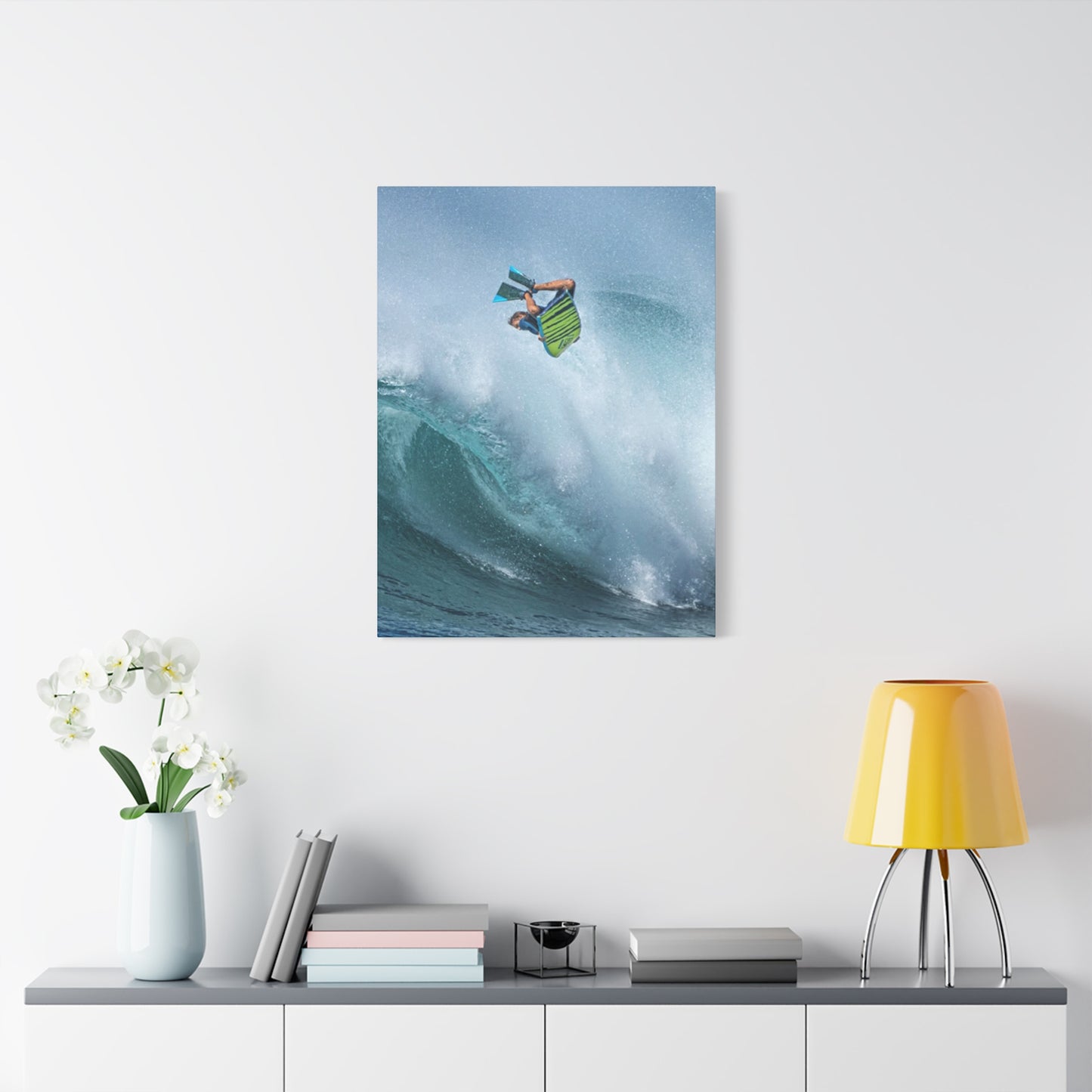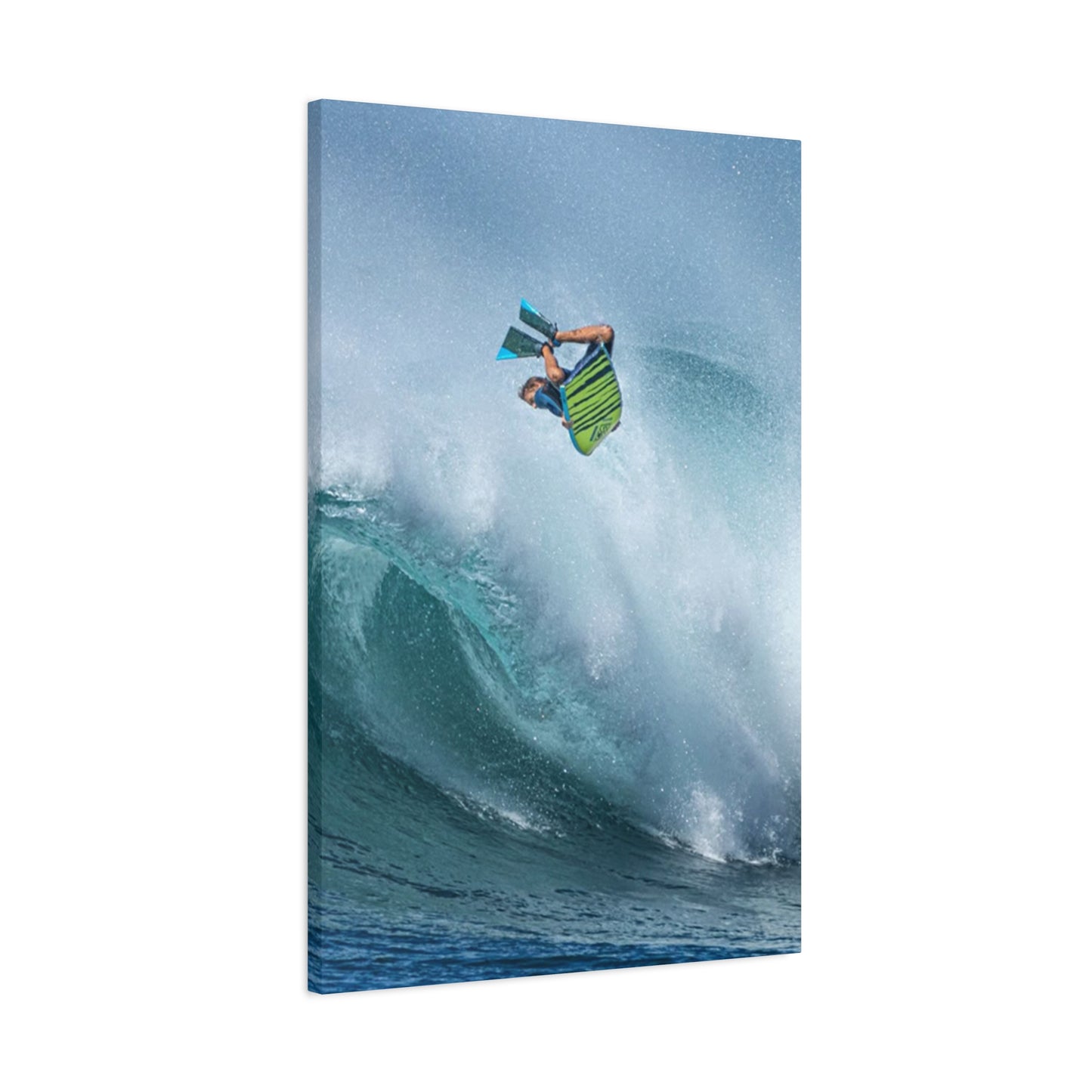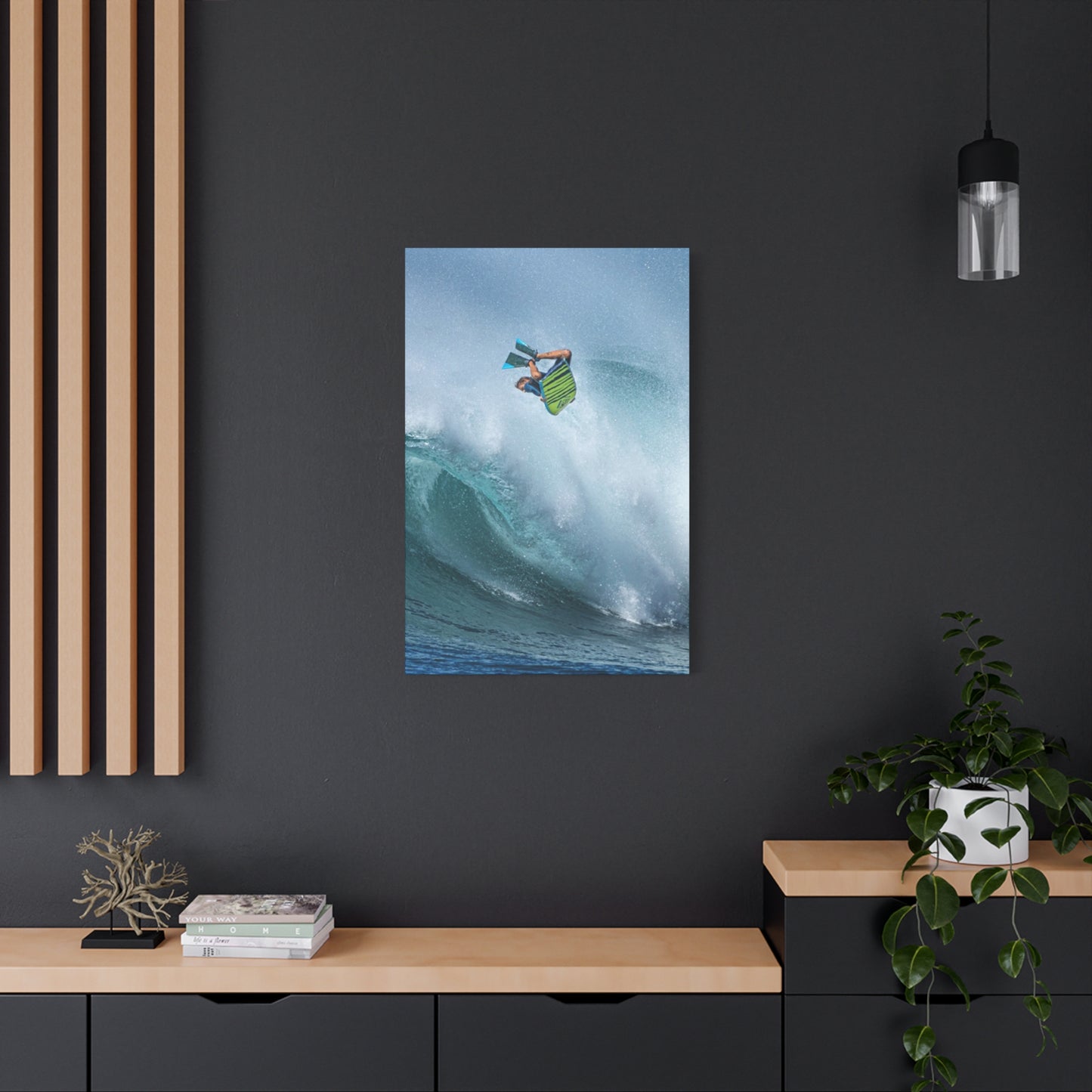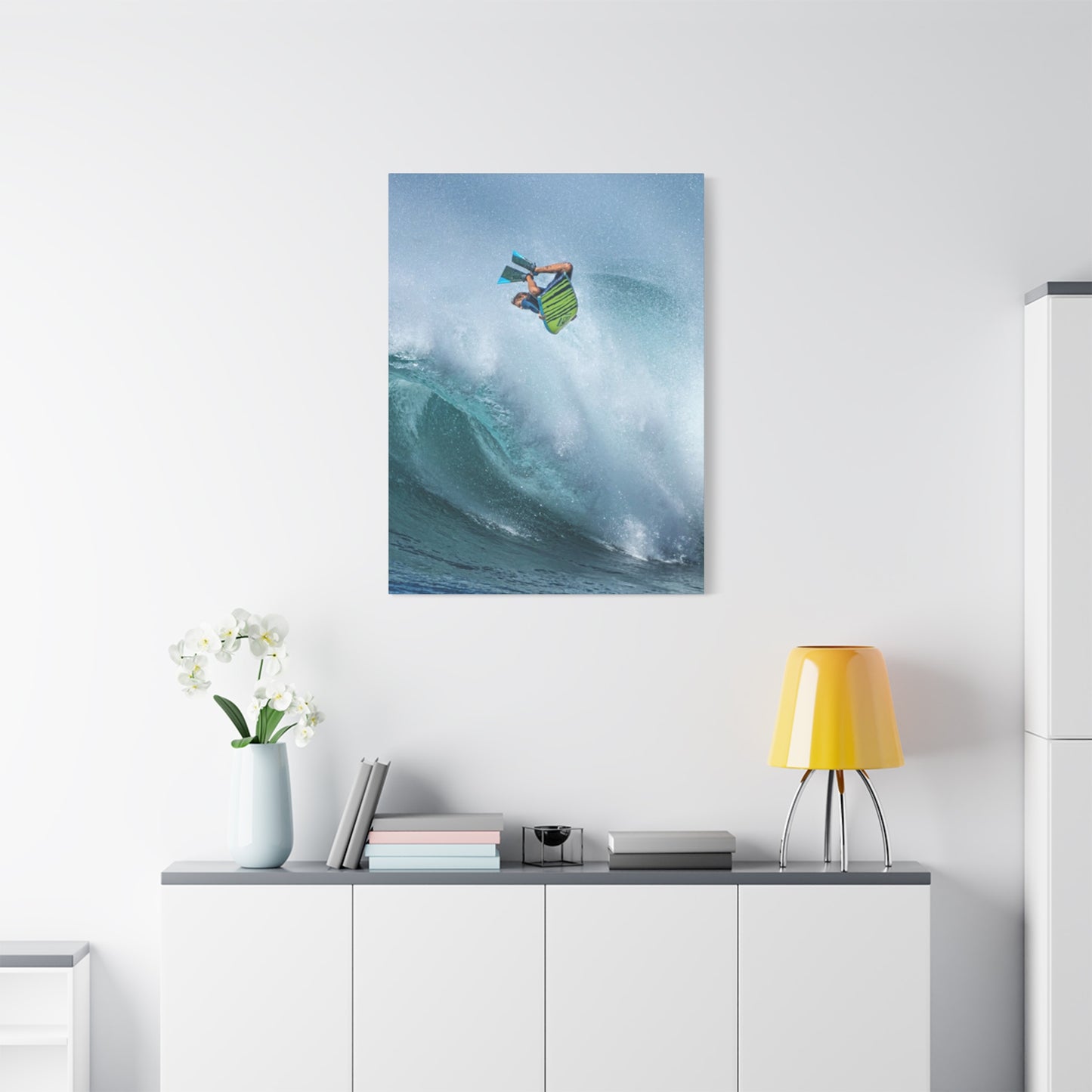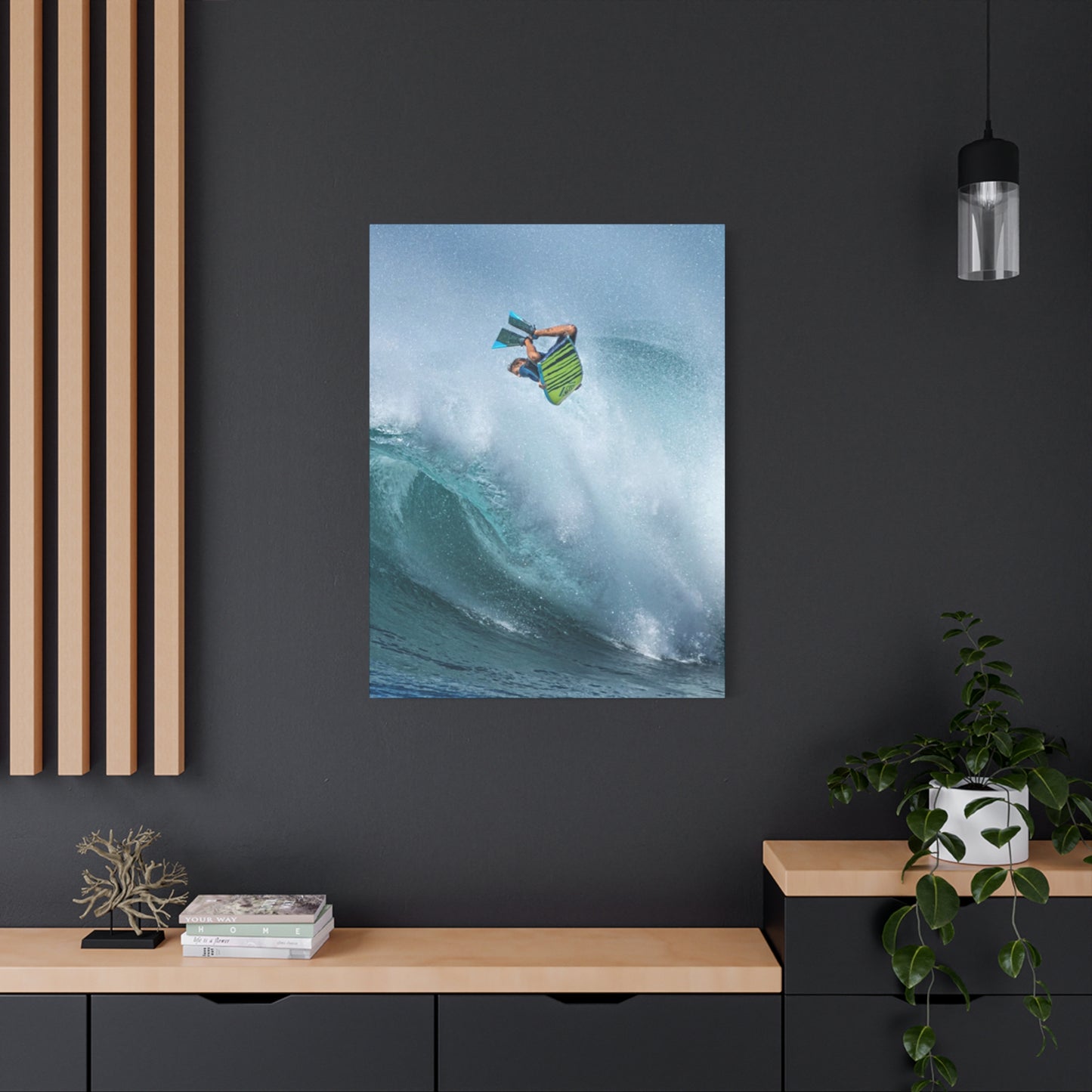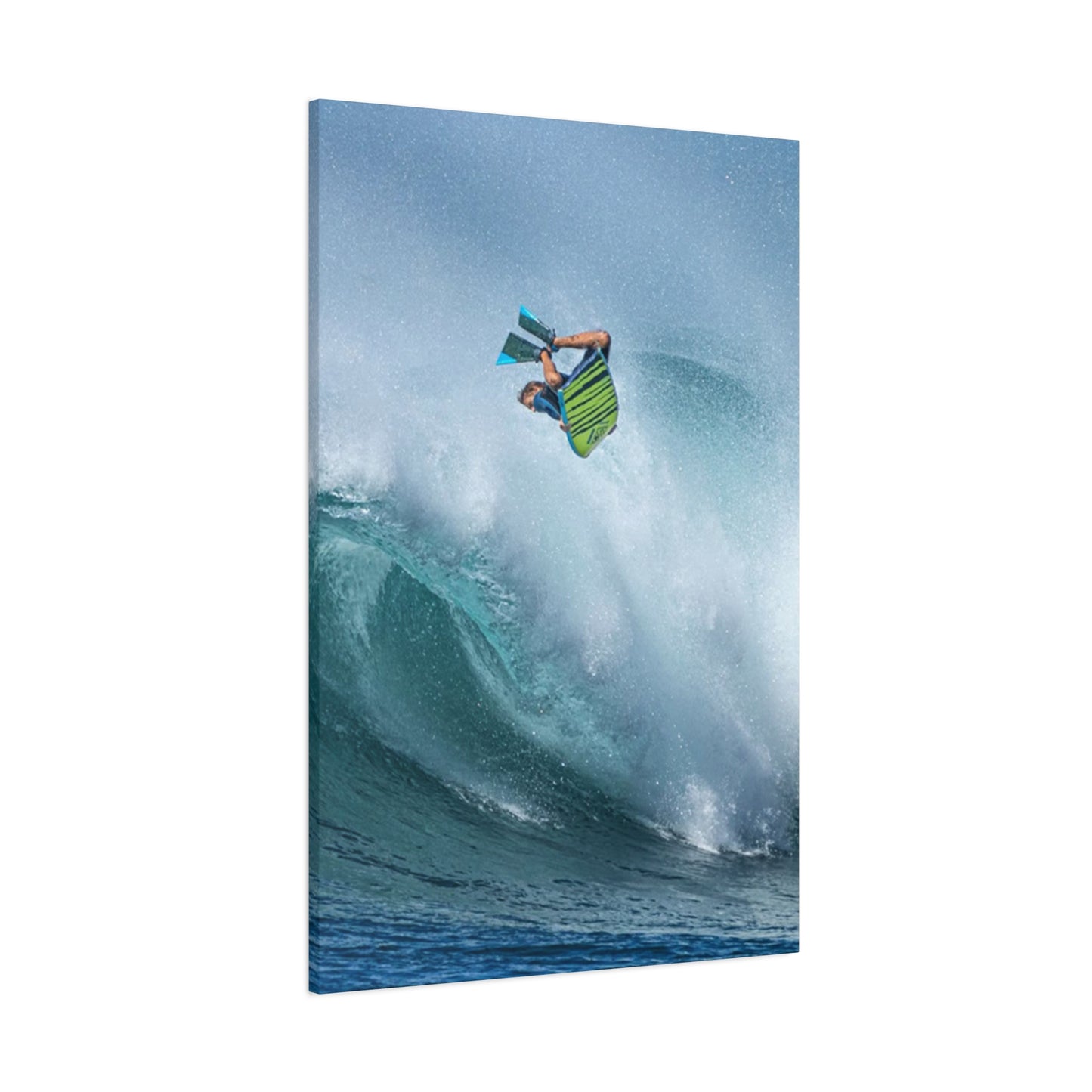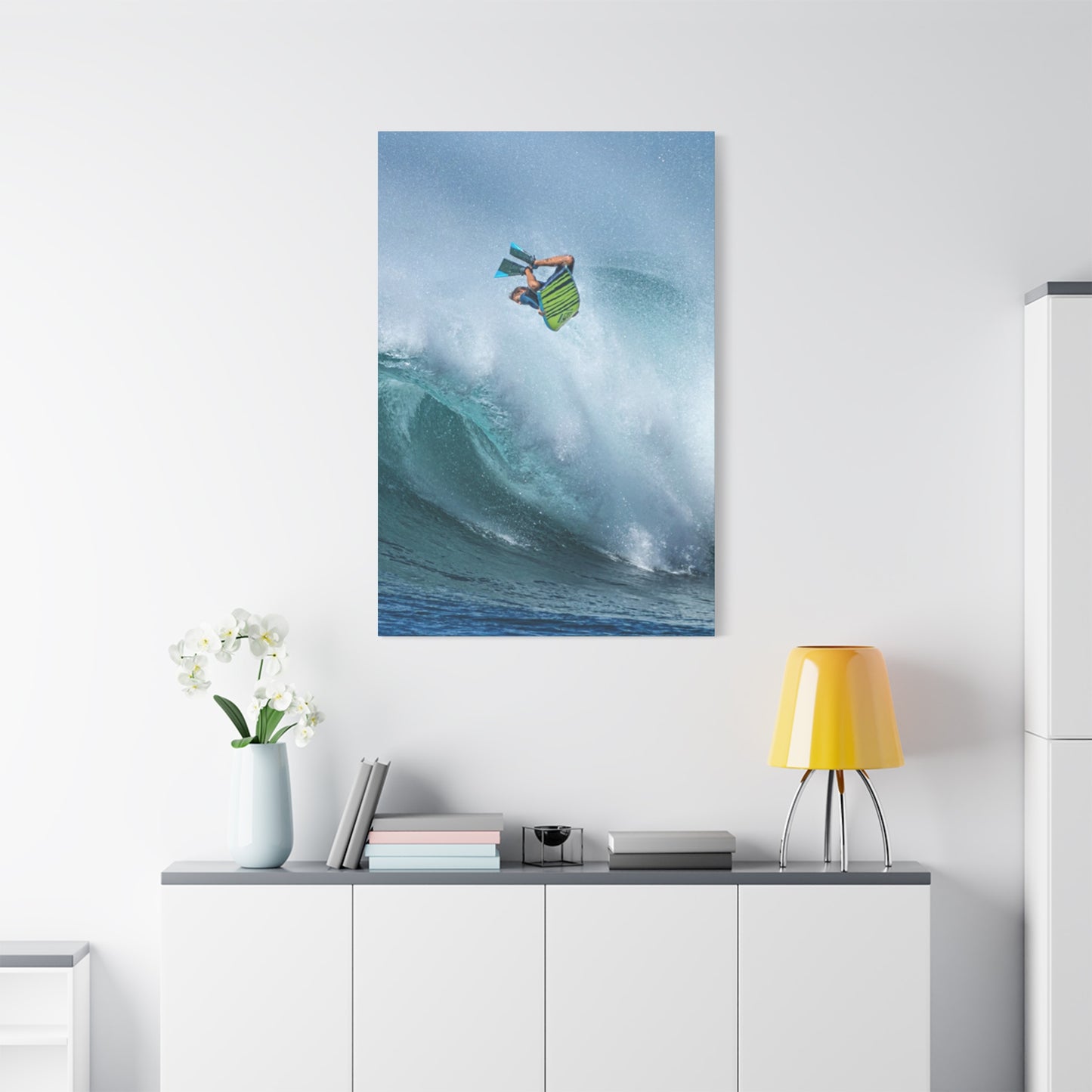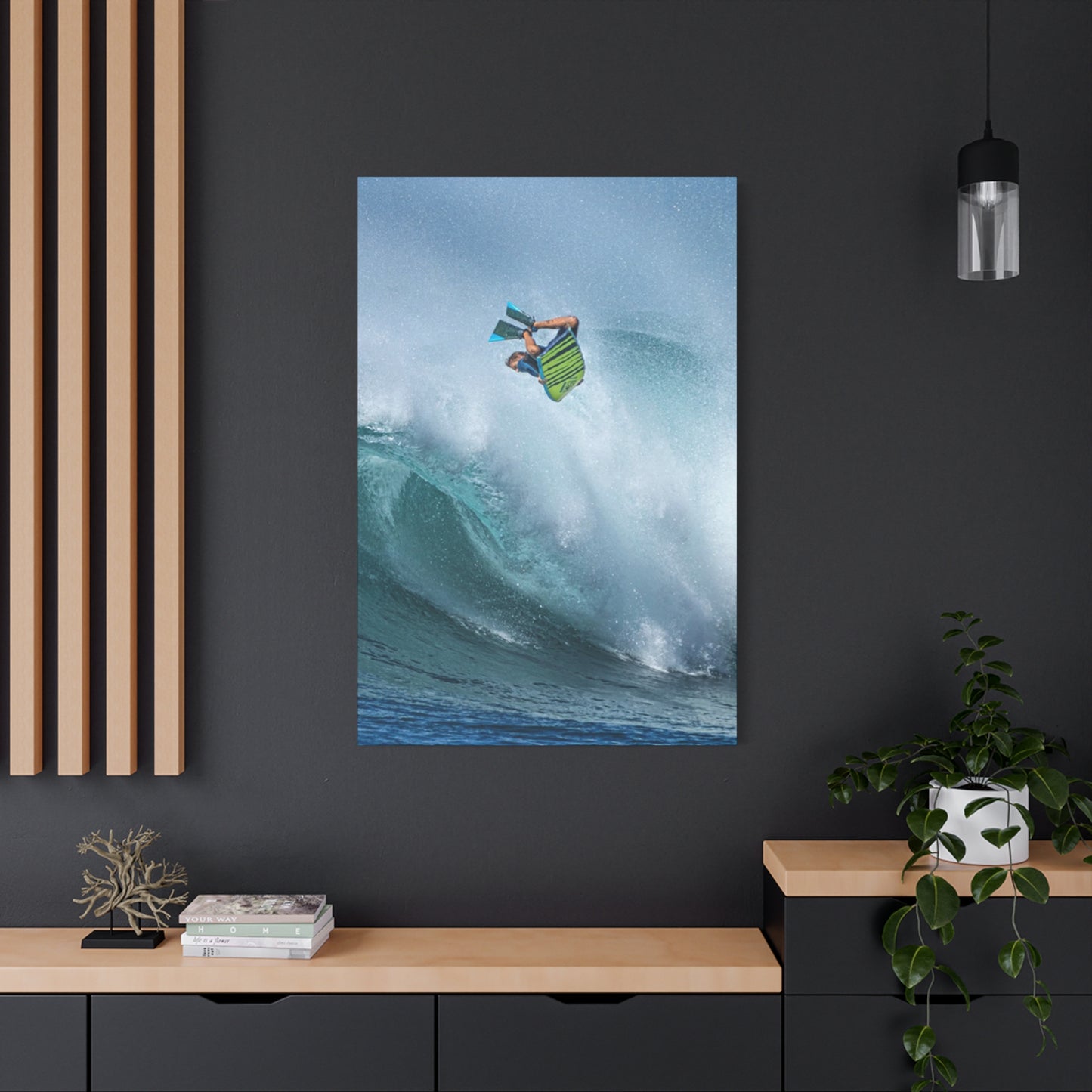The Art of Motion: How Surfing Stunt Photography Wall Art Captures the Thrill of the Sport
The marriage between extreme water sports and artistic expression creates powerful visual narratives that transform living spaces into galleries of adventure and natural beauty. When photographers freeze moments of athletic prowess against nature's most dynamic backdrop, they capture something profound that resonates with viewers on multiple levels. These images showcase human courage, physical skill, and the raw power of ocean waves converging in single frames that tell stories of risk, reward, and the eternal dance between humanity and the sea.
Professional photographers who specialize in capturing wave riders spend countless hours positioning themselves in dangerous waters, often risking their own safety to document these fleeting moments of athletic excellence. Their dedication produces images that transcend simple sports documentation, becoming artistic statements about human potential and natural wonder. When transferred onto canvas material, these photographs gain additional depth and texture that enhances their visual impact, making them ideal centerpieces for interior design schemes that celebrate adventure, nature, or athletic achievement.
The process of selecting, printing, and displaying these action-packed images involves understanding composition, color theory, print quality, and installation techniques. Homeowners, office designers, and commercial space planners increasingly recognize the value of incorporating dynamic ocean imagery into their environments. These pieces serve multiple purposes: they inspire viewers, create conversation starting points, and establish atmospheric tones that range from energetic and motivating to calming and meditative, depending on the specific image characteristics and surrounding design elements.
The Art Behind Extreme Water Sports Photography
Capturing athletes riding massive waves requires exceptional technical skill combined with intimate knowledge of ocean behavior and photography fundamentals. Photographers must anticipate wave patterns, understand lighting conditions that change by the minute, and position themselves strategically to capture angles that showcase both the athlete's skill and the wave's magnificent power. This specialized field attracts professionals who are often accomplished water sports enthusiasts themselves, possessing firsthand understanding of the physical and mental demands these activities require.
The equipment demands for this photography genre are substantial. Cameras must withstand saltwater exposure, function in wet conditions, and capture fast-moving subjects with perfect clarity. Photographers typically use high-speed shutter capabilities to freeze motion, preventing blur while maintaining sharp detail across the entire frame. Lens selection plays a crucial role, with professionals choosing between telephoto options that capture distant action and wide-angle alternatives that emphasize the wave's scale relative to the rider.
Lighting conditions in ocean environments present unique challenges and opportunities. Early morning and late afternoon hours provide golden light that adds warmth and dimension to images, while overcast conditions can create dramatic mood through diffused illumination. Photographers must constantly adjust their exposure settings to account for bright water surfaces that can fool camera meters, ensuring proper exposure of both the athlete and surrounding water elements.
The relationship between photographer and subject often develops over years of shared sessions. Trust becomes essential when photographers position themselves in impact zones or other dangerous locations to capture specific angles. This collaborative dynamic influences the final images, as athletes who trust their photographers will attempt more challenging maneuvers, knowing their achievements will be properly documented.
Post-processing techniques enhance raw captures without compromising authenticity. Professionals adjust color balance to compensate for blue-green water tones, increase contrast to emphasize texture in wave faces, and sharpen details that bring viewers closer to the action. These adjustments transform good captures into exceptional images worthy of prominent display in residential and commercial settings.
Canvas Materials Transform Photographic Images
The substrate choice for printing action photography significantly impacts the final product's appearance and longevity. Canvas material offers distinct advantages over traditional paper prints or other alternatives. The fabric texture adds tactile dimension that complements the organic nature of ocean subjects, creating visual interest even from close viewing distances. This texture interacts with light in ways that change throughout the day as natural and artificial illumination shifts, giving the artwork dynamic qualities that static prints cannot match.
Modern canvas materials designed specifically for photographic reproduction feature specialized coatings that accept ink while preserving color accuracy and preventing bleeding. These coatings create receptive surfaces that hold fine details essential for conveying the spray patterns, water droplets, and wave textures that make ocean action imagery compelling. The best canvas products balance absorbency with surface tension, allowing inks to settle into the weave while maintaining sharpness and color vibrancy.
Durability considerations make canvas particularly suitable for high-traffic areas and spaces with varying environmental conditions. Unlike paper prints that can easily tear or crease, properly stretched canvas withstands minor impacts and maintains structural integrity over decades when properly cared for. The material resists moisture damage better than paper alternatives, making it appropriate for bathrooms, kitchens, and other rooms where humidity levels fluctuate.
Weight distribution across canvas surfaces prevents sagging that can occur with paper prints over time. When properly stretched over wooden frames, canvas maintains tension that keeps the image flat and wrinkle-free. This structural stability ensures the artwork maintains its intended appearance without requiring frequent adjustments or maintenance interventions.
The gallery-wrap technique, where the image continues around the canvas edges, eliminates the need for traditional framing while creating a modern, finished appearance. This approach suits contemporary interior design aesthetics and reduces overall costs compared to custom framing options. Alternatively, some installations incorporate decorative frames that complement the canvas texture while protecting edges from wear.
Selecting Images That Resonate With Your Space
Choosing the right ocean action imagery for specific spaces requires consideration of multiple factors that extend beyond simple personal preference. The image's emotional tone should align with the room's intended purpose and the feelings you want to evoke in people who occupy that space. Bedrooms might benefit from calmer compositions that maintain energy without overwhelming relaxation efforts, while workout areas or home offices could feature more intense action shots that motivate and energize.
Color palette analysis helps ensure the artwork integrates harmoniously with existing design elements. Ocean images naturally feature blues and greens in various shades, but accompanying elements like sunlight, spray patterns, and athlete positioning introduce other colors that can either complement or clash with surrounding furnishings and wall treatments. Consider how the dominant colors in your potential artwork relate to furniture upholstery, wall paint, flooring materials, and other prominent design features.
Scale relationships between artwork and wall space significantly impact visual effectiveness. Undersized pieces appear lost on large walls, while oversized options can overwhelm smaller spaces. Professional designers often recommend that artwork occupy roughly two-thirds to three-quarters of available wall width for optimal visual balance. Multi-panel installations offer flexibility for filling large walls while creating dynamic compositions that guide viewer attention across the display.
Subject positioning within the frame influences how viewers interact with the image. Compositions with the athlete positioned left-of-center create different psychological responses than centered or right-positioned alternatives. Left-to-right movement often reads as forward progress in Western cultures, while top-to-bottom positioning can convey descent or submission to natural forces. Understanding these compositional dynamics helps select images that reinforce desired psychological effects.
The level of action intensity should match the space's energy requirements. Images capturing the critical moment of maneuver execution carry higher intensity than those showing approach phases or completion. Consider whether your space benefits from peak-action drama or would better serve occupants with compositions that suggest action without overwhelming through extreme intensity.
Color In Ocean Action Artwork
The emotional and psychological impacts of color have been studied extensively, with findings that apply directly to selecting ocean-themed artwork for interior spaces. Blue tones, which dominate most water imagery, generally promote feelings of calm, trust, and stability. However, the specific shade matters considerably. Deep navy blues can feel serious and contemplative, while bright turquoise tones suggest tropical energy and playfulness.
Green elements in ocean photography often appear in wave faces where light penetrates the water, creating luminous effects. These green tones connect viewers to nature and growth concepts, potentially promoting creativity and balanced thinking. The proportion of green versus blue in an image influences whether the overall effect feels more natural and organic or vast and oceanic.
White elements from spray, foam, and cloud formations provide contrast that prevents blue-dominated images from feeling monotonous. These bright accents draw attention to specific areas within the composition and can lighten the overall mood of darker images. Extensive white areas create energetic, active feelings, while minimal white accents maintain focus on colored elements.
Warm tones from sunrise, sunset, or artificial lighting introduce orange, pink, and gold elements that dramatically alter an image's emotional temperature. These warm accents create welcoming feelings and can help ocean imagery feel less cold or distant. Images featuring golden hour lighting often work well in social spaces where warmth and welcome are design priorities.
Black elements and deep shadows provide dramatic contrast that emphasizes light areas and creates depth perception. Images with substantial shadow areas feel more dramatic and mysterious, potentially working better in sophisticated adult spaces than children's rooms or bright, casual areas.
Understanding how these color relationships affect viewer psychology helps make informed selections that support specific design objectives. Rooms intended for relaxation benefit from images with subtle color transitions and predominantly cool tones, while spaces meant to energize occupants work better with high-contrast compositions featuring warm accent colors.
Technical Specifications For Quality Canvas Prints
Print resolution determines whether fine details remain sharp or become blurry when viewed from normal distances. Professional canvas prints should originate from high-resolution files containing sufficient pixel information to maintain clarity at the intended display size. As a general guideline, images should contain at least 100 to 150 pixels per inch at their final printed dimensions. Lower resolutions may appear acceptable from distance but reveal quality issues upon closer inspection.
Color management throughout the printing process ensures that the final product accurately represents the photographer's intended palette. This involves calibrating monitors, using standardized color profiles, and working with printers who maintain their equipment properly. Without proper color management, blues might shift toward purple, greens could appear overly yellow, or overall saturation might differ dramatically from what appeared on screen during selection.
Ink quality directly impacts color vibrancy, fade resistance, and overall print longevity. Premium archival inks contain pigments rather than dyes, offering superior resistance to fading from ultraviolet light exposure and atmospheric pollutants. While these premium inks cost more initially, they protect your investment by ensuring the artwork maintains its appearance for generations rather than showing noticeable degradation within years.
Canvas weight and weave pattern affect both the image appearance and structural characteristics. Heavier canvas materials resist stretching distortion better than lightweight alternatives but require more substantial framing components. The weave pattern should be fine enough that it doesn't interfere with image detail visibility but substantial enough to provide the tactile texture that makes canvas appealing.
Coating applications protect the printed surface from dust, moisture, and minor abrasions while potentially adding slight gloss or maintaining a matte finish. These protective coatings should be applied uniformly without creating glossy spots or dull patches that detract from image quality. The coating level chosen affects how the piece interacts with room lighting, with matte finishes minimizing glare and glossy options enhancing color depth.
Stretching quality determines whether the canvas remains taut and flat or develops waves and wrinkles over time. Professional stretching involves wrapping the canvas around wooden frames constructed from kiln-dried wood that resists warping. Corner joints should be precisely constructed and reinforced to maintain structural integrity even if the piece experiences temperature and humidity fluctuations.
Installation Methods For Maximum Visual Impact
Proper installation begins with selecting the optimal wall location based on lighting conditions, viewing distances, and traffic patterns. Natural light from windows creates changing illumination throughout the day that can beautifully enhance canvas artwork but also introduces ultraviolet radiation that accelerates fading. Positioning pieces perpendicular to windows rather than directly opposite them reduces UV exposure while maintaining good illumination.
Artificial lighting options range from general ambient sources to dedicated picture lights that highlight specific artworks. Track lighting offers flexibility for adjusting beam angles and intensity levels to accommodate different pieces or changing preferences. LED options provide excellent color rendering without generating heat that could damage artwork over extended exposure periods.
Height placement significantly influences viewer engagement and compositional effectiveness. The standard recommendation places artwork centers at eye level, typically 57 to 60 inches from the floor. However, this guideline requires adjustment based on ceiling heights, furniture arrangements, and whether viewers will primarily experience the piece while standing or seated. In dining areas where people spend time seated, slightly lower placement often works better.
Hardware selection should account for the artwork's weight and wall construction. Drywall installations require anchors rated to support at least double the artwork's weight, providing safety margins against failure. Installations into studs offer maximum security for heavy pieces or high-traffic areas where accidental impacts might occur. Wire hanging systems provide flexibility for easy adjustments, while bracket systems offer maximum stability.
Spacing considerations for multi-panel installations require balancing visual separation with compositional unity. Panels spaced too widely feel disconnected and fail to read as cohesive units, while insufficient spacing creates visual confusion as compositions compete rather than complement. Professional installers typically recommend spacing panels two to four inches apart, adjusting based on overall composition size and viewing distance.
Leveling tools ensure that single pieces hang straight and multiple panels maintain proper alignment. Even slight tilting can create distracting visual effects that undermine the installation's impact. Digital levels provide precision that helps achieve professional results, while laser leveling systems facilitate multi-panel installations by projecting reference lines across entire walls.
Creating Gallery Walls With Action Photography
Multi-piece installations offer opportunities for creative expression that single artworks cannot achieve. Gallery walls incorporating several related images can tell visual stories that unfold across the display, guide viewers through progressive narratives, or create rhythmic patterns that activate entire walls. Planning these installations requires considering how individual pieces relate to each other and to the overall composition.
Layout planning should begin with cardboard templates or digital mockups that allow experimentation without creating wall damage from multiple nail holes. This planning phase lets you test different arrangements, adjust spacing, and ensure the overall composition achieves desired balance and visual weight distribution. Some designers prefer symmetrical grid layouts for formal, organized appearances, while others favor asymmetrical organic arrangements that feel more casual and contemporary.
Size variation within gallery walls creates visual interest and hierarchy. Incorporating pieces of different dimensions prevents monotony and allows certain images to dominate while others play supporting roles. The largest piece often serves as the focal point, with smaller surrounding images complementing rather than competing with this central element.
Thematic consistency helps gallery walls feel intentional rather than random. This consistency might involve matching color palettes, related subjects, similar photographic styles, or complementary compositional approaches. However, too much similarity can feel repetitive, so successful installations typically balance unifying elements with enough variation to maintain viewer interest.
Negative space between and around artworks functions as a design element that affects how viewers process the overall composition. Insufficient negative space creates cluttered, overwhelming effects, while excessive spacing makes installations feel disconnected and incomplete. The optimal balance depends on the individual pieces' characteristics and the overall design aesthetic you're pursuing.
Frame consistency or intentional variation influences the gallery wall's visual cohesion. Using identical canvas depths and edge treatments creates unified appearances appropriate for formal settings, while mixing frame styles can enhance eclectic or casual design schemes. This choice should align with the room's overall decorating approach and the degree of visual harmony you want to achieve.
Maintenance And Preservation Techniques
Canvas artwork requires minimal maintenance but benefits from occasional attention that prevents dust accumulation and addresses minor issues before they become significant problems. Regular dusting using soft, dry cloths or feather dusters removes surface particles that can accumulate in canvas texture and dull the image appearance over time. Avoid using cleaning products, water, or damp cloths unless specifically addressing stains, as moisture can damage canvas and inks.
Environmental control extends artwork lifespan significantly. Maintaining relatively stable temperature and humidity levels prevents canvas expansion and contraction that can stress stretched material and eventually cause sagging or warping. Ideal conditions include temperatures between 65 and 75 degrees Fahrenheit and relative humidity levels between 40 and 50 percent. While these precise conditions may be impractical for living spaces, avoiding extreme fluctuations helps preserve artwork integrity.
Direct sunlight exposure represents the greatest environmental threat to canvas prints. Ultraviolet radiation breaks down ink pigments and canvas materials, causing fading and yellowing that gradually diminish image quality. Positioning artwork away from direct sun exposure or using UV-filtering window treatments protects your investment. If pieces must hang in sunny locations, consider rotating them periodically with other artworks to distribute exposure effects.
Smoke and airborne pollutants can gradually discolor canvas surfaces and degrade protective coatings. Kitchens pose particular challenges due to cooking vapors that contain oils and particulates. If displaying canvas artwork near cooking areas, ensure adequate ventilation and consider more frequent cleaning sessions. Smoking indoors accelerates degradation significantly and should be avoided in rooms containing valuable artwork.
Pest prevention protects canvas materials from damage by insects that might nest behind stretched canvases or feed on organic materials. Regular inspections behind artworks help detect pest activity early, when interventions can prevent serious damage. Maintaining clean environments and addressing moisture issues that attract pests provides the best long-term protection.
Professional restoration services can address significant damage from accidents, environmental exposure, or age-related degradation. These specialists can repair tears, replace damaged stretcher bars, re-stretch sagging canvas, and sometimes restore faded colors. However, prevention remains far more cost-effective than restoration, making proper care and maintenance essential practices for protecting valuable artwork.
Budget Considerations And Investment Value
Canvas print pricing varies dramatically based on size, quality, production methods, and source. Understanding what drives these price differences helps make informed purchasing decisions that balance budget constraints with quality expectations. The lowest-priced options often involve overseas production, lighter canvas materials, and standard inks that may not offer archival longevity. Mid-range products typically feature better materials and domestic production with improved quality control. Premium options incorporate the highest-grade materials, advanced printing technologies, and often include limited edition status or artist signatures.
Size directly impacts cost since larger prints require more materials, consume more ink, and involve more substantial framing components. However, price per square inch typically decreases as size increases, making larger single pieces potentially more economical than multiple smaller prints covering equivalent wall space. This economy of scale should factor into decisions about whether to purchase single large statements or multiple smaller pieces.
Limited edition prints command premium prices due to scarcity and potential appreciation value. Photographers who number and sign prints limit production quantities, creating exclusivity that appeals to collectors and those viewing artwork as financial investment rather than purely decorative elements. While limited editions cost more initially, they may maintain or increase value over time, unlike unlimited production prints.
Reproduction rights and licensing affect prices when images feature recognizable professional athletes or were captured at major competitive events. Photographers must compensate athletes for using their likenesses commercially, and these costs transfer to consumers through higher print prices. Images of anonymous athletes or recreational participants typically cost less due to simplified rights situations.
Frame and hanging hardware costs add substantially to total project expenses. Basic stretched canvas arrives ready to hang, requiring only appropriate hardware for your specific wall type. Adding decorative frames significantly increases costs but may better suit certain decorating styles or provide additional protection for valuable prints.
Installation expenses should be considered when planning budgets, particularly for large pieces or complex gallery wall arrangements. Professional installers ensure proper placement, secure mounting, and appropriate lighting, but their services add to project costs. DIY installation saves money but requires confidence in your abilities and appropriate tools.
Long-term value considerations extend beyond initial purchase price. Higher-quality prints requiring replacement less frequently may prove more economical over decades than cheaper alternatives needing replacement when they fade or deteriorate. This lifecycle cost perspective favors investing in quality materials and production methods that extend usable lifespan.
Custom Printing Versus Ready-Made Options
Pre-printed canvas artwork offers convenience and immediate gratification at generally lower costs than custom printing. Many online and physical retailers stock popular ocean action images in standard sizes ready for immediate shipment. This approach works well when available options match your preferences and size requirements. The limited selection means you might not find exactly what you envision, and popular images may appear in numerous homes, reducing uniqueness.
Custom printing provides complete control over image selection, sizing, and production specifications. You can work directly with photographers to select specific images from their portfolios, including shots that haven't been widely distributed or published. Custom sizing ensures perfect fit for your specific wall dimensions, eliminating compromise on scale relationships. The customization process requires more time and involvement but produces pieces precisely matching your vision.
Working directly with photographers offers potential advantages beyond image selection. Direct relationships may provide opportunities to negotiate pricing, request specific alterations or crops, and learn stories behind the images that add personal meaning. Photographers often appreciate direct patron relationships and may offer insights about display recommendations or future work that interests you.
Print-on-demand services bridge the gap between ready-made and fully custom options. These platforms offer vast image libraries where you can select pictures and specify sizes, with printing occurring after you place your order. Quality varies significantly among these services, making research and reviews essential before committing to unfamiliar providers. The best services offer satisfaction guarantees and quality assurances that protect your investment.
Sample evaluation helps assess quality before committing to full-sized prints. Many custom printers offer small sample prints at nominal costs, allowing you to evaluate color accuracy, canvas texture, and overall production quality. This investment proves worthwhile when ordering large or expensive pieces where quality concerns would be costly to address after production.
Turnaround time differences should factor into planning, especially for time-sensitive projects like renovations or special events. Ready-made pieces ship immediately or within days, while custom orders might require weeks from initial consultation through production and delivery. Planning ahead prevents disappointment and allows time to address any issues that arise during production.
Complementary Design Elements And Room Coordination
Creating cohesive interior design requires considering how canvas artwork interacts with surrounding elements including furniture, textiles, lighting fixtures, and architectural features. Color coordination provides the most obvious connection point, with successful designs often pulling accent colors from artwork and repeating them in throw pillows, rugs, or decorative accessories. This repetition creates visual harmony that makes spaces feel intentionally designed rather than randomly assembled.
Texture relationships between canvas artwork and other room elements add depth to design schemes. The tactile quality of canvas pairs naturally with other organic materials like wood furniture, woven textiles, and natural fiber rugs. Mixing textures prevents spaces from feeling flat or monotonous while maintaining cohesive aesthetics through complementary material choices.
Style consistency helps unify rooms even when mixing elements from different sources. Contemporary ocean action photography works naturally in modern or transitional design schemes but might feel discordant in traditional formal spaces. Understanding your overall decorating style helps select imagery that enhances rather than contradicts your aesthetic direction.
Scale relationships extend beyond the artwork itself to encompass furniture and other decorative elements. Large canvas pieces pair well with substantial furniture that can visually support the artwork's presence without being overwhelmed. Conversely, delicate furniture styles might look better with smaller, more subtle artwork that doesn't dominate the visual environment.
Lighting fixtures can reinforce thematic connections to ocean imagery. Fixtures incorporating natural materials, organic forms, or colors drawn from the artwork strengthen the cohesive design narrative. Metallic finishes often work well with ocean themes, with silver and chrome suggesting water surfaces while warmer metals like brass or copper can complement sunset-lit images.
Accessories provide opportunities to strengthen connections between artwork and room design. Decorative items like glass vases, ceramic pieces in complementary colors, or sculptural elements with flowing forms can echo oceanic themes without becoming overly literal or themed. Subtle references prove more sophisticated than obvious nautical decorations that might feel juvenile or touristy.
Thematic Approaches For Different Rooms
Living rooms serve as primary gathering spaces where family and guests spend significant time, making them ideal locations for statement artwork that reflects household personality and interests. Large-scale ocean action pieces work particularly well above sofas or fireplaces, creating focal points that anchor room design. The imagery's dynamic nature encourages engagement and conversation while the blue-green color palette typically complements common neutral design schemes.
Bedrooms require more careful consideration since artwork influences the space's relaxation potential. While dramatic action shots work well in social spaces, bedrooms often benefit from slightly calmer compositions that maintain visual interest without overwhelming the soothing atmosphere essential for quality sleep. Images captured during approach phases or featuring expansive water surfaces might serve better than peak-action shots.
Home offices and studies benefit from motivational imagery that encourages focus and determination. Action photography emphasizing athletic achievement and overcoming challenges can provide inspirational reminders during difficult work sessions. The presence of natural elements helps counterbalance the mental fatigue that accumulates during extended cognitive work.
Bathrooms present unique opportunities since their functional connection to water makes ocean imagery thematically appropriate. Smaller canvas pieces or multi-panel arrangements work well in typically limited bathroom wall space. Ensure proper protection from moisture by selecting canvas prints with appropriate protective coatings and avoiding direct exposure to shower spray.
Exercise rooms and home gyms naturally accommodate high-energy action imagery that reinforces athletic identity and motivation. These spaces tolerate more intense compositions than bedrooms, making them perfect for dramatic peak-action shots. The psychological reinforcement these images provide can positively impact workout motivation and effort levels.
Dining areas benefit from artwork that enhances social atmosphere without overwhelming conversation. Moderately scaled pieces featuring balanced compositions work well in these spaces. Consider how the imagery's mood aligns with dining experiences you want to create, whether casual family meals or more formal entertaining occasions.
Hallways and transitional spaces offer opportunities for creating visual narratives through sequential images. Gallery walls featuring progressive action sequences or varied perspectives of similar subjects can transform otherwise underutilized spaces into engaging design features that connect different areas of the home.
Historical Evolution Of Wave Riding Documentation
The human fascination with riding waves extends back centuries across various cultures, though systematic documentation began relatively recently with photography's invention. Early photographic attempts faced significant technical limitations including slow shutter speeds that prevented freezing fast motion and equipment vulnerability to water damage. These constraints meant early wave riding images often showed participants on beaches or in calm water rather than during active rides.
The mid-twentieth century brought technological advances that revolutionized ocean photography. Waterproof housings protected cameras from saltwater damage while faster films and improved shutters enabled action capture. Photographers began positioning themselves in water, bringing viewers dramatically closer to the action than shore-based shooting allowed. This proximity transformed documentation from distant observation to immersive experience.
The development of specialized water housings designed specifically for surf photography enabled photographers to capture images from within the wave barrel, creating perspectives that riders themselves experienced. These inside views revolutionized how audiences understood the sport's dynamics and appeal, contributing to its growing popularity throughout the latter twentieth century.
Film camera limitations required photographers to carefully manage exposure settings without immediate feedback about results. This technical challenge demanded deep expertise and often meant returning from sessions with limited usable images despite capturing numerous frames. The uncertainty pushed photographers to develop sophisticated understanding of light, motion, and ocean behavior.
Digital photography's emergence transformed the field by providing immediate feedback, essentially unlimited exposures, and post-processing capabilities that film couldn't match. Photographers could experiment freely, review results instantly, and adjust techniques in real-time. This technological shift dramatically increased productivity and enabled previously impossible creative approaches.
Contemporary digital cameras feature sophisticated autofocus systems, extremely high frame rates, and remarkable low-light performance that continues expanding creative possibilities. Modern photographers can capture sequences of rapid-fire images that break down motion into components previously visible only through high-speed scientific photography. These capabilities enable unprecedented artistic and documentary approaches.
Social media and digital distribution transformed how wave riding photography reaches audiences. Images can now achieve worldwide distribution within hours of capture, dramatically compressing the timeline from creation to widespread viewing. This immediate sharing culture influences photographer priorities and sometimes emphasizes social media appeal over traditional aesthetic considerations.
The Relationship Between Athlete And Photographer
Successful ocean action photography depends on collaborative relationships built through shared time in challenging conditions. Trust develops as athletes and photographers work together repeatedly, learning each other's tendencies and communication styles. Athletes gain confidence that photographers will document their achievements properly, while photographers learn to anticipate athlete movements and positioning.
Timing coordination determines whether photographers capture peak moments or miss critical split-seconds that differentiate exceptional images from mediocre documentation. Experienced teams develop signals and positioning patterns that maximize capture probability without verbal communication, which is often impossible during active sessions due to distance and environmental noise.
Safety considerations complicate these relationships since photographers positioning themselves for optimal angles sometimes occupy spaces where out-of-control rides might end. Both parties must understand risk levels and maintain awareness of each other's positions. Experienced teams develop protocols that protect both participants while enabling necessary creative risk-taking.
Equipment coordination sometimes involves athletes wearing camera mounts that capture first-person perspectives impossible to achieve externally. These mounted cameras provide intimate viewpoints that help audiences experience rides subjectively rather than as external observers. However, added equipment weight and bulk affect performance, requiring athletes to balance documentation benefits against competitive disadvantages.
Creative collaboration extends beyond simple documentation when photographers and athletes work together to create specific images or sequences. These planned shoots might involve attempting particular maneuvers at specific locations during optimal light conditions. The planning process resembles choreography more than simple documentary photography.
Recognition and compensation issues arise when professional images generate commercial value. Ethical photographers ensure athletes receive appropriate credit and compensation when their images are licensed or sold. These business relationships work best when clearly defined through agreements that specify usage rights and revenue sharing before shooting begins.
The emotional dynamics of these relationships influence image character. Photographers who genuinely understand and appreciate the athletic achievements they document tend to create more authentic, powerful images than those approaching the work purely as commercial assignment. This authentic engagement translates subtly but meaningfully into final images.
Environmental Conditions And Photography Challenges
Water clarity dramatically affects underwater and water-level photography results. Pristine tropical waters enable shooting through wave faces with remarkable clarity, revealing details of both the wave structure and the athlete navigating it. Murky water conditions in cooler or high-sediment locations reduce visibility and require different photographic approaches focused on surface features rather than underwater elements.
Wave characteristics vary enormously based on local geography, ocean floor topography, and weather conditions. Photographers must understand how these factors influence wave formation to position themselves advantageously and anticipate action development. Different wave types require different photographic approaches and create distinct aesthetic qualities in resulting images.
Wind conditions affect both wave quality and photography logistics. Offshore winds groom wave faces into smooth surfaces that photograph beautifully while helping photographers maintain position. Onshore winds create choppy conditions that obscure clean lines and push photographers toward shore. Strong winds at any angle create spray that can obscure views and threaten equipment despite protective housings.
Current patterns challenge photographers who must maintain positions relative to moving action while managing their own safety. Strong currents can quickly carry photographers away from ideal positions or exhaust them through constant positioning efforts. Understanding local current patterns helps photographers conserve energy and maintain necessary positions throughout sessions.
Marine life considerations affect photographer safety and behavior. Sharks pose obvious concerns in certain locations, while less dramatic hazards like jellyfish, sea urchins, and coral can injure inattentive photographers. Awareness of local marine ecology helps photographers protect themselves while avoiding actions that might harm delicate ocean ecosystems.
Weather pattern knowledge helps photographers anticipate optimal shooting conditions and plan sessions accordingly. Approaching storm systems generate large swells that produce dramatic waves but also create dangerous conditions and poor lighting. Post-storm periods often provide ideal combinations of size and clean conditions as weather systems pass and winds lighten.
Seasonal variations in light quality, water temperature, and ocean activity patterns influence when and how photographers pursue their work. Summer typically brings warmer water and longer days but sometimes smaller waves, while winter often produces larger swells but challenging cold-water conditions and shorter shooting windows due to reduced daylight.
Legal And Ethical Considerations
Property rights in photographic images belong initially to the photographer unless contractual agreements specify otherwise. Understanding intellectual property basics helps both photographers and consumers navigate licensing, reproduction rights, and usage permissions appropriately. Unauthorized reproduction or commercial use of protected images violates copyright law regardless of how the images were accessed or acquired.
Model releases provide legal protection when images will be used commercially and feature recognizable individuals. Athletes photographed during public events where no privacy expectation exists can generally be photographed and those images used editorially without releases. However, commercial usage such as advertising or product sales typically requires signed releases granting specific permissions.
Location permissions sometimes apply when photography occurs on private property or controlled areas. Public beaches generally allow photography without special permissions, but commercial shoots might require permits from local authorities. Private surf breaks, resort beaches, and similar controlled locations require property owner permission before commercial photography.
Trademark and branding issues arise when branded equipment, clothing, or locations appear prominently in images. Photographers must navigate complex rules about incidental inclusion versus promotional use of trademarks. Generally, incidental appearance of brands during authentic documentation doesn't create issues, but deliberately featuring trademarks for commercial benefit without permission can generate legal problems.
Cultural sensitivity considerations apply when photographing in locations with indigenous populations or unique cultural practices. Respectful photographers research local customs, obtain appropriate permissions, and represent communities accurately rather than exploiting exotic imagery without understanding or respecting cultural context. These ethical practices benefit everyone by building positive relationships and avoiding exploitative dynamics.
Environmental ethics require photographers to minimize their impact on fragile coastal ecosystems. This includes avoiding damage to coral reefs, not disturbing nesting wildlife, and properly disposing of any waste. Photographers often serve as ocean ambassadors whose work can raise environmental awareness, making their personal commitment to conservation particularly important.
Commercial licensing practices should be transparent and fair to all parties. Clear contracts specifying usage rights, duration, exclusivity, and compensation prevent misunderstandings that could damage professional relationships. Standard licensing structures exist for various usage types, but custom agreements often make sense for unique situations.
Emerging Technologies And Future Directions
Drone photography expands creative possibilities by providing aerial perspectives previously requiring helicopters or aircraft. These elevated views showcase wave patterns, athlete positioning relative to surroundings, and environmental context in ways ground-level photography cannot achieve. Drone technology continues advancing with improved stability, longer flight times, and better camera quality that will further enhance creative options.
Three-dimensional imaging technologies create opportunities for innovative display formats beyond traditional flat prints. Lenticular printing produces images that change perspective as viewers move, creating motion effects without electronics. Holographic displays might eventually enable truly three-dimensional artwork that floats in space, though this technology currently remains expensive and limited in application.
Virtual reality integration could transform how audiences experience ocean action imagery. Rather than viewing static images from fixed perspectives, VR technology might eventually allow viewers to virtually position themselves in locations of their choosing within captured scenes. This immersive approach would fundamentally change relationships between audiences and photographic artwork.
Artificial intelligence applications in photography range from automated editing assistance to sophisticated image enhancement that extends beyond traditional processing. AI systems can remove unwanted elements, enhance specific features, or even generate entirely synthetic images that combine multiple captures. These capabilities raise questions about authenticity and the boundaries between photography and digital art.
Environmental monitoring and documentation represent growing applications for ocean photography technology. Camera systems deployed in fixed locations provide long-term data about wave patterns, ocean conditions, and ecosystem changes. This scientific application of photographic technology contributes valuable data while producing imagery that sometimes has artistic merit independent of its research purpose.
Improved low-light capabilities enable photography during previously impossible conditions including night sessions under artificial lighting or natural phenomena like bioluminescence. These expanded time windows create opportunities for distinctive imagery that stands apart from traditional daytime photography.
Conclusion
Surfing Stunt Photography Wall Art is the perfect medium to bring the raw, exhilarating energy of surfing into your home. It captures not just the motion of the sport, but the very essence of what makes surfing so thrilling—the connection between body, wave, and nature. Whether it's the heart-pounding moment of a rider catching a massive wave, the graceful yet powerful swoop of a perfect carve, or the stunning aerial stunts that challenge gravity itself, surfing photography immortalizes the artistry, skill, and beauty of one of the world’s most dynamic sports. This unique form of wall art allows you to bring the ocean's wild energy and the surfer’s free spirit into your space, turning any room into a testament to adventure, athleticism, and the art of motion.
What makes Surfing Stunt Photography Wall Art so captivating is its ability to freeze moments of extreme physicality and natural beauty in time. The surfboard's trajectory as it slices through the water, the spray of salty foam, and the silhouette of a surfer mid-air create a visual drama that is both stunning and awe-inspiring. These photographs are not mere representations of a sport; they capture the spirit and pulse of surfing—moments of tension, balance, and exhilaration that are at the heart of this water-based adventure. The use of high-speed photography allows us to witness the rapid, split-second action from an angle that is often impossible to fully appreciate in person. Each shot is a frozen frame of triumph, defying the laws of nature and physics, and speaking to the sheer athleticism required for such feats.
The beauty of this genre of wall art lies in the harmony it strikes between motion and stillness. The photographer’s lens often captures the surfer suspended in mid-air, or the curl of a wave as it barrels forward, creating an interplay of fluid, natural movement and the sharp focus of the still image. This tension between the two elements mirrors the dynamic relationship between a surfer and the sea—a constant push and pull of mastery, balance, and freedom. The result is a collection of photographs that seem to be full of life, even as they hang motionless on your wall. These pieces invite the viewer to pause, breathe, and appreciate the moment that is captured—a fleeting, powerful interaction with the ocean that speaks to the pursuit of greatness, the joy of movement, and the unrelenting drive for the perfect ride.
Another key element that makes Surfing Stunt Photography Wall Art so powerful is its ability to convey the scale of surfing's challenges. In many shots, the surfboard becomes a tiny speck in the vastness of the ocean, with towering waves serving as an imposing backdrop. These compositions not only showcase the physical skill of the surfer but also highlight the beauty and power of the natural world. The vastness of the sea and sky juxtaposed with the intimate, focused moment of the surfer creates a sense of awe—a reminder of how small we are in the face of nature's enormity, and how, despite that, we can still find ways to master it. This connection to nature and the adventure of conquering the unknown gives Surfing Stunt Photography its unique energy—an energy that you can bring into your home and share with others.
The color palettes in these pieces further enhance their impact. Surfing photos often capture the rich hues of the ocean—turquoise blues, deep greens, foamy whites—and the shifting light of the sky at different times of day. Whether it's the golden glow of sunrise or the fiery reds and oranges of sunset, the colors evoke feelings of warmth, freedom, and adventure. These stunning natural palettes make Surfing Stunt Photography Wall Art the perfect addition to a room that’s meant to feel energizing, vibrant, and alive. Whether you're drawn to the deep blues of a stormy sea or the soft pastels of a calm morning surf, the colors in these photographs add a dynamic layer to your interior décor, infusing the room with a sense of vitality and wonder.
Moreover, Surfing Stunt Photography Wall Art can be a deeply personal reflection of the surfer's dedication, grit, and love for the sport. For avid surfers, these pieces resonate on an emotional level, representing not just a sport but a lifestyle—one that is defined by a constant chase for the perfect wave, the thrill of overcoming obstacles, and the joy of being one with nature. Even for those who are not surfers, the photographs evoke a sense of adventure and courage—a reminder of the beauty of taking risks, pushing boundaries, and embracing the unknown. They can serve as a motivational piece in your home, inspiring you to pursue your own passions and challenges with the same determination and passion that surfers exhibit in the water.

















